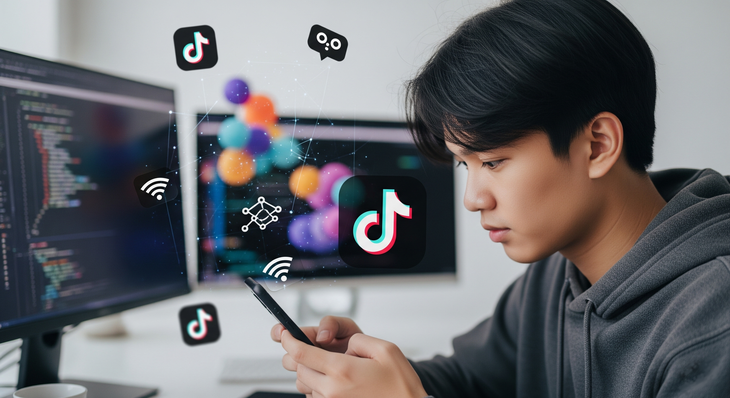
Gen Z learns technology 4.0… in just 1 minute?
In recent years, social networks have become an indispensable tool in accessing and learning knowledge, especially in the field of technology.
Learning Technology Through Short Videos : A New Learning Trend for Young People
TikTok, YouTube, and Instagram Reels are exploding with a variety of technology-related content, from programming, artificial intelligence (AI), graphic design, 3D printing to free software to support work and study.
Many channels on platforms like TikTok, YouTube, or Instagram choose to convey knowledge through short videos, usually only lasting from 15 to 60 seconds. The content focuses on introducing technology tools like ChatGPT, Canva, or AutoGPT.
Short, intuitive and easy-to-understand videos help eliminate the feeling of “overload” often encountered when learning technology in the traditional way. Knowledge acquisition becomes easier, suitable for the fast-paced life and short-form content consumption habits of young people. No need for deep expertise, anyone can start from zero.
In particular, social networks create a flexible learning environment - where learners can proactively select content according to their personal needs, study anytime, anywhere, and easily update new trends. This convenience has made learning technology more popular, sustainable and closer than ever.
When technological knowledge is over-reduced
Despite its convenience and appeal, learning technology via social networks also raises questions about its long-term effectiveness and the learner's ability to absorb in-depth knowledge.
One of the biggest problems is over-abbreviation. Many videos are only a few dozen seconds long, forcing content creators to simplify their knowledge , which can easily lead to lack of depth or misunderstanding.
In addition, not all content is accurate or reliable . The fact that everyone can share knowledge makes the quality of information difficult to control. Learners are easily caught up in trends that are "trying for fun" instead of truly understanding and applying knowledge systematically.
In addition, the lack of a clear system and roadmap is also a disadvantage of this learning method. Learners often receive knowledge in a fragmented, unordered manner, leading to gaps in understanding, especially with complex skills such as programming or operating AI tools.
Therefore, social networks should be seen as a supporting tool rather than a main source of learning, and learners need to know how to select content, combined with in-depth documents to achieve long-term effectiveness.
Study smart
To turn knowledge into lasting skills, social media should be seen as a starting point, a place to arouse curiosity, but not a complete substitute for systematic, methodical learning.
Smart learners are those who know how to combine the speed of social media with the depth of books and formal courses. Only then will technology truly become a tool to help the young generation master the future, not just a trend that passes by on the phone screen.
MSc. Vo Ngoc Nhon - Deputy Director of the Admissions Center of Ho Chi Minh City University of Technology - once shared with Tuoi Tre : "The important principle is to always verify information through reliable sources, through verification tools such as Google Scholar, ResearchGate... or consult experts and teachers.
Although social networks provide a rich and accessible source of information, if not careful, learners can become victims of fake news.
This highlights the importance of checking and verifying information when learning via social media, especially in the technology sector.
Source: https://tuoitre.vn/gen-z-hoc-cong-nghe-qua-tiktok-xu-huong-hay-trao-luu-nua-mua-20250529223207195.htm























![[Photo] National Assembly Chairman Tran Thanh Man visits Vietnamese Heroic Mother Ta Thi Tran](https://vphoto.vietnam.vn/thumb/1200x675/vietnam/resource/IMAGE/2025/7/20/765c0bd057dd44ad83ab89fe0255b783)











































































Comment (0)